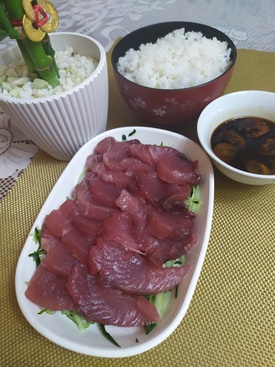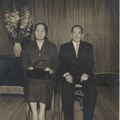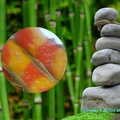We are Nikkei, our roots come from a distant place in the east, which is Okinawa in Japan, from there our grandparents came, in search of a better future for their family, to this beautiful country that became our homeland, our Peru . Like all immigrants, it is most likely that they did it with the purpose of staying for a while, collecting okane (money) and returning, as they said; This was postponed, until they stayed completely, so that it was that land that received them and finally they stayed in it, until their last days, without wanting to return, being buried and united to this land that welcomed them.
Currently we must be in the fifth generation, it could even be the sixth; A few years ago we stopped calling the second generation nisei or the third generation sansei , and started calling us all: nikkei .
One of the adaptation problems that the immigrants had was the food, it was completely different from what they consumed, although it is true that they adapted and got used to many things, they tried to preserve some dishes that they liked the most, looking for the ingredients for it. The Chinese helped a lot in this, a migration that took us fifty years, in this way it provided them with many of the products that could be used, they already planted soybeans, a product used by both colonies, for shoyu (soy sauce or soy sauce). ), also for tofu (soy product).
One of those dishes preferred by many was sashimi , and most of them lived on the coast, where maritime products were at hand in ports like Callao. Very recognized cuisine, especially as a result of the internationalization of Japanese food, becoming fashionable; It has been adapted in each country, what they call tropicalization, to adapt to the Western and particular tastes of each country, as has happened with sushi and maki . An example of this is the acevichados here in Peru or the California roll, which is something you won't find in Japan.
Returning to sashimi , this dish has been more difficult to be accepted by local tastes, it is something that, at the first time, is difficult to accept, many do not accept eating raw fish. I was also one of those people who refused to fall in love with sashimi ; I have a theory about it, many times some flavors that we are not used to in our mouth are immediately rejected, I think we should give second chances (that is, second, third, etc.), in those we can appreciate different characteristics that we like, We get used to certain flavors, textures, smells, until finally we really appreciate it in its entirety. This happened to me, for example, with goya (balsamine) and it happens to many that I heard from their mouths say that they were never going to eat nattó (it is a soy derivative, produced by the fermentation of soybeans), which That sucked, it's horrible, but now I see them saying that's what they like the most, especially those who have been to Nihon (Japan).
This preference for sashimi was passed on from the ojí to our parents, but our ancestors lived in times of scarcity, they always looked for the products most within their reach, they looked for the cheapest ones, this trend changed over time and they leaned towards fish. whites, the situation improved, they looked for more expensive products, the truth is that whatever the species, if it was fresh there was no problem.
The adaptation to the country that welcomed them meant that sashimi had a competitor due to the preferences of our grandparents: ceviche. But what was this dish? It was raw fish like sashimi , the Peruvians told them “how could I eat raw fish”, but the ceviche was the same, it was cooked with lemon, but we put shoyu (sillao or soy sauce), to which they said no. It was the same.
Our grandparents were attracted to lemon and chili, to the point of preparing a good ceviche, so much so that many dedicated themselves to preparing them, to the point of offering them. It was the children (our parents) who achieved something that the Peruvians began to like, they began to sell them, some timidly in the chinganas or bodegas, and then took a turn and turned them into cevicherías. How much Nikkei influence there is in it.
If we start to analyze everything, the Peruvian liked ceviche marinated in a mixture of lemon juice, chili, onion, garlic, sometimes waiting for up to hours, but that changed. The current ceviche is made in an instant, it is not left to marinate, it is made very quickly, to be eaten at that moment, so what about the fish? It's more crude. What does it look like? To sashimi . Not only that, over time what we call tiradito (a type of ceviche) is born, but isn't this the fish cut like for sashimi? Another coincidence or influence.
We must also recognize that our sashimi also suffered its variations, I will tell you my case, we added lemon and chili to the shoyu , this is how our grandparents ate it, they had adapted to the country that welcomed them, they put chili and lemon in everything, even to the soup.
For us Nikkeis, now older, it is difficult to decide between sashimi and ceviche, I could say equally both or perhaps depending on the occasion. For example, both are dishes that are to be savored, to be shared, but not to be filled. Surely if it is a completely Nikkei meeting, it will be sashimi , but if you are going out with friends to talk, to hang out, after a little soccer game, surely a ceviche to share that moment; But if it's a romantic date, I don't think so. For the next generations, although it is true that my children like both, my son has a preference for ceviche, which is surely what he can eat more of and in more places. Surely young people prefer it, a sign of integration with this country that welcomed our grandparents and is now ours.
What do you prefer?
© 2020 Roberto Oshiro Teruya







